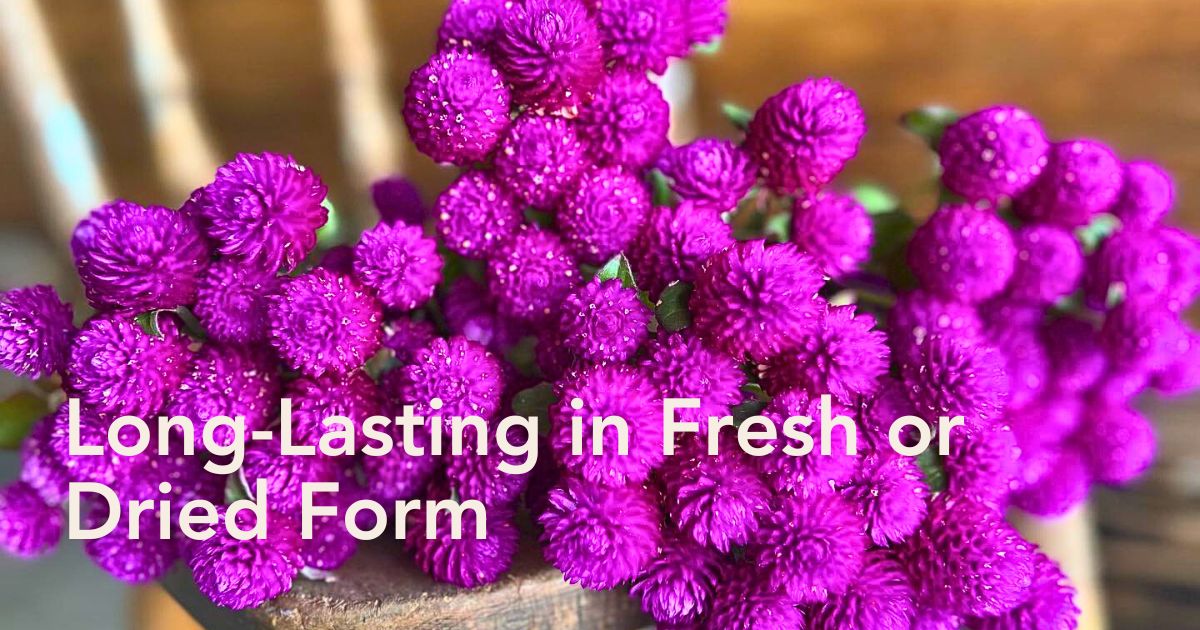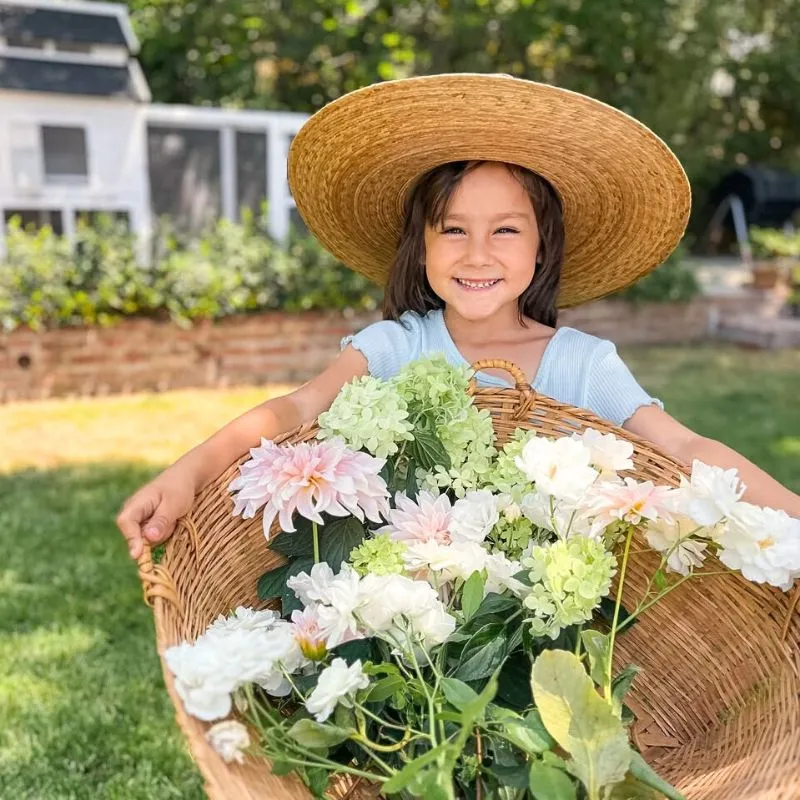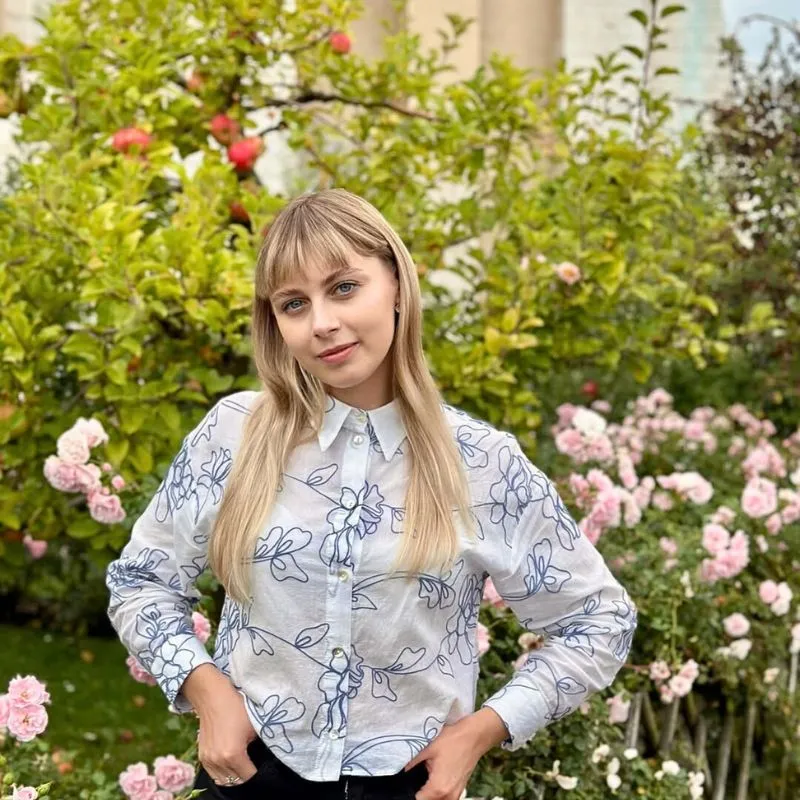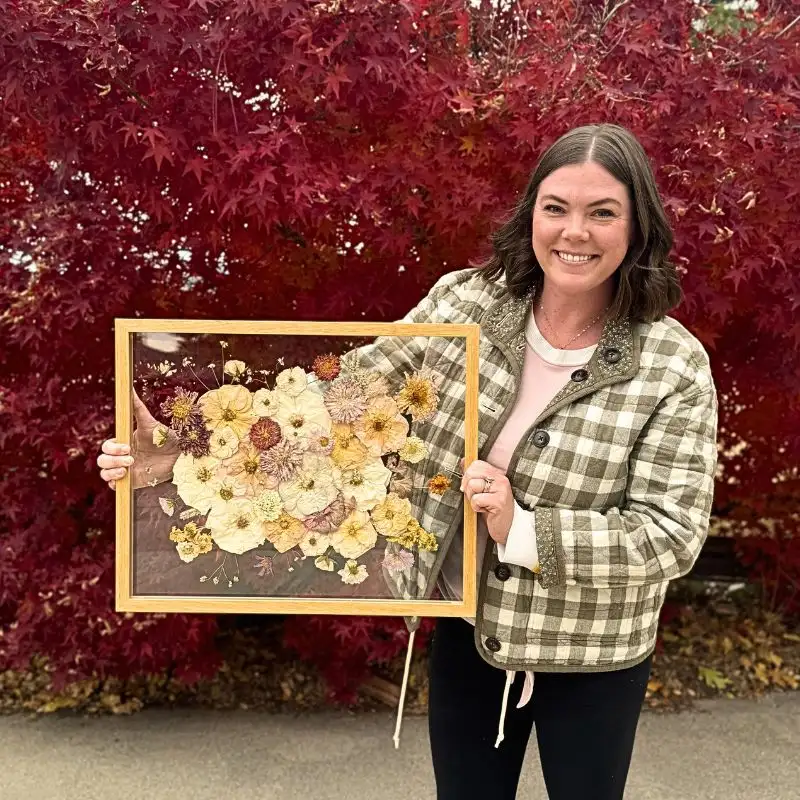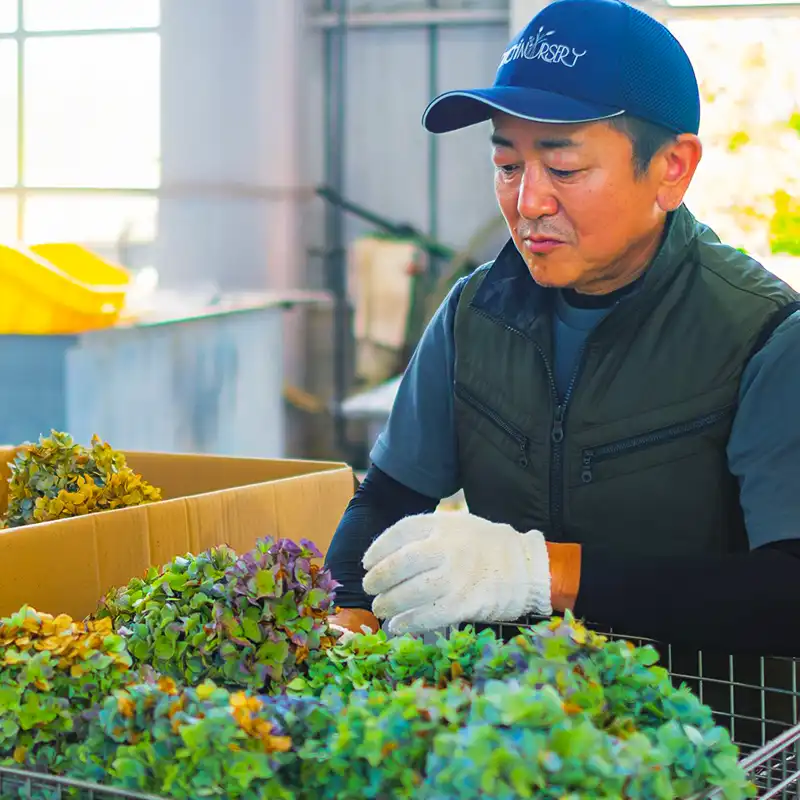Easy to grow, long-flowering, and remarkably heat and drought-tolerant, Globe Amaranth (Gomphrena globosa) is a reliable favorite for gardeners looking to add bold color and texture to borders, beds, and containers. Native to Central America, this low-maintenance annual thrives in sunny conditions and produces clover-shaped flowers from early summer well into fall.
Whether planted as a focal feature or as part of a larger pollinator-friendly display, the Globe Amaranth plant brings season-long interest with minimal effort. While often mistaken for a perennial, it’s typically grown as an annual in most climates. Its vibrant clover-like flower heads, available in shades of purple, pink, white, and red, also make it a top choice for gardeners interested in cut flowers or dried arrangements.
What Is Globe Amaranth (Gomphrena Globosa)?
Globe Amaranth, or Gomphrena globosa, is a warm-season annual known for its clover-like, globe-shaped flower heads and upright, branching habit. It typically grows 30 to 60 cm (12 to 24 inches) tall, forming tidy, rounded plants that fit beautifully in garden beds, borders, and containers.

Native to Central America, it’s widely grown for its tolerance to heat, drought, and poor soil, thriving in full sun with minimal maintenance. The colorful flowers are papery bracts, not petals, which surround tiny, less visible true flowers. These bracts are what make the plant so popular for both fresh and dried use—they hold their color incredibly well after cutting.
Although often mistaken as a perennial, Globe Amaranth is an annual in most climates. Still, its long flowering time—from early summer through fall—makes it feel like a season-long staple. It also attracts bees and butterflies, making it a valuable addition to pollinator gardens.
Globe Amaranth Varieties You Should Know
While Gomphrena globosa is the most familiar species, several cultivated varieties and related types offer gardeners and designers a vibrant palette of colors, sizes, and growth habits to explore. These varieties are popular for their strong stems, extended blooming periods, and versatility in both fresh and dried arrangements.

Truffula™ Pink (Gomphrena Pulchella)
This award-winning variety grows to 55-70 cm (22-28 inches) tall and is prized for its bright pink globe flowers and exceptional performance in heat and drought. It’s especially loved by designers for its bold presence in garden borders and bouquets.
Ping Pong Series
Compact and uniform, these plants reach about 40-50 cm (16-20 inches) in height and come in shades such as purple and White. Ideal for containers or bedding plants, their structure also makes them excellent for drying.
Forest™ Red (G. Haageana)
With upright growth and vibrant red bracts, this variety reaches approximately 65 cm (26 inches) in height. It’s suited for landscapes and larger mixed beds where height and color impact are needed.

Audray and QIS Series
These florist-favorite series are bred for uniformity, stem length, and bloom density. Available in colors such as White, Pink, Purple, and Salmon, they are top choices for cutting gardens and dried floral work.
Strawberry Fields (G. Haageana)
Recognized for its scarlet-red flowers tipped with gold, this variety adds bold contrast in mixed beds or as a stand-alone feature.
Why Globe Amaranth Works in Floral Design
Though it’s a gardener’s delight, Globe Amaranth has quietly earned its place in the floral design world for its striking texture, color, and exceptional vase life. Whether used fresh or dried, its globe-shaped bracts add a playful, sculptural element to floral compositions.

One of the most celebrated qualities of Globe Amaranth is how beautifully it dries. The papery bracts retain their color and form for months—sometimes even years—making the flower a staple in everlasting arrangements, wreaths, floral jewelry, and botanical art. Once air-dried, it becomes a low-maintenance design material that doesn't fade or shatter easily.
With shades ranging from purple and magenta to white, red, and soft pastels, Globe Amaranth brings bold or subtle color depending on the palette. Its compact, ball-shaped form adds a sense of dimension and rhythm to everything from bouquet work to centerpieces and statement installations.

Whether you're going for boho, romantic, rustic, or minimal, Globe Amaranth adapts effortlessly. It pairs beautifully with other textural elements like strawflowers, grasses, seed pods, and eucalyptus, and works just as well in seasonal arrangements as it does in year-round dried collections.
Globe Amaranth Symbolism and Cultural Meaning
Beyond its ornamental beauty, Globe Amaranth carries rich layers of symbolism rooted in both folklore and cultural tradition. Its long-lasting nature—especially when dried—has made it a symbol of permanence, endurance, and unfading affection.
Because the papery bracts retain their vibrant color long after harvest, Globe Amaranth has come to represent immortality, unchanging love, and eternal friendship. In many cultures, it’s given as a gesture of appreciation for relationships that withstand time and distance.

In parts of Asia and South America, Globe Amaranth features in religious offerings and traditional rituals. It’s commonly used in dried flower garlands, particularly in Hindu and Buddhist ceremonies, symbolizing purity and the cyclical nature of life. In Hawaiian culture, the flower is sometimes included in leis to signify long-lasting affection or deep gratitude.
Because it continues to flower in the heat of summer and withstands challenging conditions, Globe Amaranth is also a symbol of strength, endurance, and tenacity, a quiet but powerful presence in the garden and beyond.
Growing Globe Amaranth: What Gardeners Should Know
One of the biggest appeals of Globe Amaranth is just how easy it is to grow. Whether you're planting a cutting garden, filling out borders, or designing a pollinator-friendly bed, this sun-loving annual offers months of vibrant blooms with very little maintenance.

Globe Amaranth thrives in warm, sunny climates and is best planted after the danger of frost has passed. While often mistaken for a perennial, Globe Amaranth is grown as an annual in most zones. In frost-free regions (USDA Zones 9–11), it may behave as a tender perennial, but in colder areas, it won’t survive winter. It grows 30 to 60 cm (12 to 24 inches) tall, with some cultivars reaching even higher. Plants are well-branched and naturally compact, making them ideal for borders, mass plantings, and containers.
It prefers full sun and well-drained soils, tolerates drought once established, and isn’t fussy about soil fertility. Watering should be moderate, especially early in the season, and deadheading is not essential for continued blooming. To get a head start, gardeners can start seeds indoors 6–8 weeks before the last frost or sow directly once the soil warms. Space plants 20–30 cm (8–12 inches) apart to allow good air circulation and healthy branching.
The Rise of Globe Amaranth in Everlasting Floral Trends
Few flowers make the leap from garden to dried design quite like Globe Amaranth. With its signature globe-shaped blooms and naturally papery texture, it retains color and structure exceptionally well, long after being cut. These characteristics have earned it a lasting place in the world of everlasting floral trends, where durability and visual impact go hand in hand.

What sets Globe Amaranth apart is its ability to dry without losing its vivid shades or tidy form. The flowers consist of colorful bracts rather than fragile petals, allowing them to hold their structure even after the moisture is gone. When dried correctly, they preserve their shape and saturation for months—sometimes even years—making them a staple for long-lasting designs and creative botanical work.
Drying the flower is a straightforward process. Stems are best harvested when the blooms are fully colored but before any of the central florets begin to shed. After removing the leaves, the stems are tied in small bunches and hung upside down in a dark, dry, well-ventilated space. This prevents fading and allows for even air circulation. Within a week or two, they are fully dried and ready for arranging, storing, or styling.

Once dried, Globe Amaranth becomes an incredibly versatile element in design. Its vibrant bracts and rounded shape bring structure and visual rhythm to arrangements that range from traditional to experimental. The flower finds its place in a wide array of floral applications, including bouquets and centerpieces, wreaths and garlands, dried flower walls, floral jewelry and crowns, and botanical crafts and keepsakes. Its ability to hold up without preservatives or complicated treatments has made it a favorite in sustainable and low-waste floral work, especially among designers embracing natural materials and long-life blooms.
Design-wise, dried Globe Amaranth pairs beautifully with other long-lasting floral elements such as Strawflowers, Lagurus (bunny tail grass), Statice, dried Roses or Ranunculus, and textural fillers like seed pods and Eucalyptus. These combinations create rich, layered arrangements that can lean rustic, romantic, or contemporary, depending on the composition. Whether used in earthy bouquets, minimalist installations, or festive seasonal pieces, Globe Amaranth brings a unique sculptural texture and long-term charm that enhances any dried floral design.
How to Style With Globe Amaranth: From Minimal to Maximal
Whether fresh from the garden or carefully dried, Globe Amaranth is a flower that plays well in both simple and elaborate design aesthetics. Its structured form, vibrant tones, and exceptional longevity make it a go-to for florists, stylists, and DIY designers alike.

In minimal arrangements, Globe Amaranth shines as a textural focal point. A few stems in a narrow vase or a single-color cluster in a hand-tied bouquet create a striking look, especially when paired with neutral tones or dried grasses. Its spherical shape adds a rhythmic balance that anchors lightweight designs without overwhelming them.
On the maximal end, it blends beautifully into rich, layered arrangements. Combine it with dramatic elements like Celosia, Dahlias, or ornamental grasses for garden-style bouquets that are lush and dynamic. In large-scale installations, Globe Amaranth adds consistency and pop, threading visual energy through a wide range of color palettes—from jewel tones to sunset hues.

Designers also incorporate it into floral crowns, wreaths, wearable pieces, and event decor, where its ability to hold shape and color without water becomes a major asset. Whether used fresh for an organic, just-picked look or dried for textural contrast, Globe Amaranth adapts effortlessly across seasons, styles, and creative disciplines.

Globe Amaranth may be modest in size, but its impact—both in the garden and floral design—is anything but small. Easy to grow, drought-tolerant, and endlessly versatile, this annual brings long-lasting color to borders, beds, and bouquets alike. As fresh flowers fade with the seasons, Globe Amaranth continues to shine, dried into everlasting beauty that tells a story of resilience, creativity, and natural elegance. Whether you're planting for pollinators or designing for permanence, Globe Amaranth is one flower that truly goes the distance.
Header image by @Fleury Farm.

